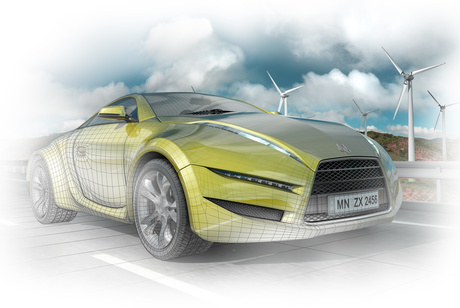How green is your fleet?

If you’re after a simple way of determining how green your fleet is, look no further than the Green Vehicle Guide, a comparison website developed by the Department of Infrastructure and Regional Development.
The website provides user-friendly tools to search for and compare the environmental performance and fuel consumption of new light vehicles supplied to the Australian market since 2004 (there’s also a section that provides info on models from 1986-2003). In this context, a “light vehicle” means any 4-wheeled road vehicle with a gross vehicle mass under 3.5 tonnes.
The GVG also enables consumers to estimate the annual fuel costs and CO2 emissions of those vehicles.
The site currently uses a star rating system - which is based on a combination of a vehicle’s CO2(greenhouse) emissions and its air pollution emissions. The star rating has been under review for some time and a new version of the website will steer away from this system. Instead, the GVG website will focus on the CO2 emissions value for each vehicle as the key measure for comparing vehicles.
The new GVG will, however, continue to provide data on fuel consumption, noise and air pollution, giving consumers the flexibility to emphasise those aspects that are important to them when they are undertaking vehicle searches.
Why the change?
Like all ratings systems operating in a dynamic environment, the ratings benchmarks used on the GVG need to be updated regularly as the environmental performance of the vehicle fleet improves. Such updates are essential to maintain the rating systems’ relevance and credibility.
Since the last update of the star ratings in 2006, improvements in the environmental performance of the vehicle fleet (in both greenhouse and air pollution emissions) have resulted in a ninefold increase in the number of vehicles listed with a 4, 4.5 or 5 star rating. If these arrangements continued, the implementation of more stringent minimum standards would result in an even greater proportion of vehicles receiving higher ratings, which would have made the GVG ratings less relevant as a tool to help consumers choose between those vehicles that just meet minimum standards and those with class-leading environmental performance.
The department considered revising the thresholds at which each rating point was awarded, but after consultations with stakeholders it was concluded that an equitable and consistent update based on the previous star ratings system was problematic, and that a move to a system with a stronger focus on CO2 emissions using objective emissions data provided a more robust and long-term framework for the GVG. As a consequence, the department decided to adopt a new approach, which compares vehicles on the basis of CO2 emissions data rather than ratings.
The revised approach eliminates the need to adjust the ratings thresholds as the environmental performance of the new vehicle fleet improves, because it provides an objective and clear benchmark in the form of the CO2 emissions test result in g/km (‘the CO2 number’). This provides for a more dynamic and consumer-driven approach to comparing and benchmarking vehicles as the environmental performance of the vehicle fleet changes over time. The CO2 number is also reported on a new vehicle’s fuel consumption label.
Tips and tricks
In addition to rating specific makes and models, the site provides general information on what to consider when looking for a greener car. There’s also a section that includes tips and tricks for more environmentally friendly motoring, as well as a handy fuel calculator.
All-electric haulage fleet under mining alliance
A strategic alliance between Newmont and Caterpillar will see the rapid deployment of an...
How to measure ROI of field service management software
Some ROIs are easier to calculate than others. It's important to consider both tangible and...
Preparing the grid for electric vehicles
A new $3.4 million trial will help support growing adoption of electric vehicles across Australia...




